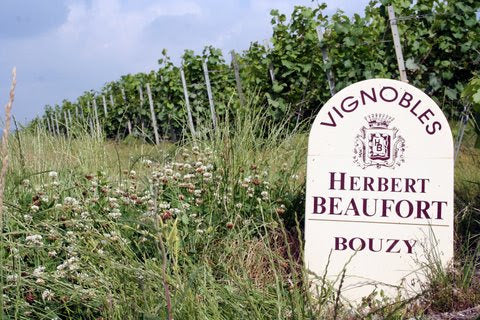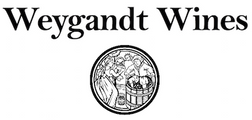
Champagne 101: Your Guide to Drinking Better Bubbles
In the Weygandt Wines universe, we think it’s always a good time to drink champagne but like many specialty categories, there can be quite a bit of jargon to wade through. We’ve put together a brief overview of the category to help you find your best bubbles for any occasion.
The Basics—How Magic is Made
Located about 80 miles northeast of Paris, the Champagne region guards its prestigious reputation closely. Chardonnay, Pinot Noir, and Pinot Meunier account for 99.7% of the region's grapes and of these, Chardonnay and Pinot Noir are used most often. In addition to its instantly recognizable name, Champagne is also renowned for pioneering the "traditional method” (méthode traditionelle) of wine production.
The grapes are first hand harvested and then quickly pressed and allowed to ferment. The juice is blended according to the producer's signature style, then bottled, capped, and allowed to go through a second fermentation in the bottle, a distinguishing feature of the traditional method. This produces and traps the carbon dioxide that results in the wine's lovely effervescence.
When the second fermentation is complete, the yeast cells die and form a sediment called “lees.” The wine ages for a period of time with the lees in the bottle (sur lie), which adds savory characteristics, often of baked bread, honeycomb, and sometimes toasted nuts. This process is known as “autolysis,” which is also used for other wines, such as Muscadet. For Champagne, this step is also called “sur lattes,” which refers to the process of storing the bottles on their side to keep the cork from drying out during aging.
Once aging is complete, the sediment is removed through the process of “riddling,” slowly rotating and tilting the bottle a little bit every day until the bottle is upside down. If done by hand, riddling can take two months; if done by machine, it can be done in as quickly as one week. The neck of the bottle, where all the sediment has now relocated, is quickly frozen. When the cap is removed, the pressure of the carbon dioxide that has built up in the bottle during the second fermentation will force out the dead yeast and any other sediment.
Before final bottling, an amount of sugar—dosage—is sometimes added to the wine to achieve the desired level of sweetness for the style being produced. Then the wine is then corked and shaken to help integrate the wine with the added sugar. The wine may again rest for several weeks or months before being brought to market.
While this method yields top quality results, it is also time consuming and labor intensive, which figures into the higher end cost for wines bearing the name champagne.

House versus Grower Champagne
Some of the most recognizable champagnes in the world come from large champagne houses (grandes marques). These houses are often part of larger commercial entities that may own several labels, such as Veuve Cliquot, Dom Perignon, or Krug.
One of the many unique elements of champagne production is the use of reserve wine, or a portion of still wine that’s held back from vintages of excellent quality, to create a signature style for the house. This ensures consistency in both quality and volume, even during years when grape yields are low. Bollinger is well known for keeping an enormous cellar of aged reserve wine in magnums.
This helps house champagnes, in particular, create a unified flavor profile that can be repeated year after year, right down to the intensity of those lovely bubbles. The signature blend of Moët & Chandon, by far the world's largest producer of champagne, is 50% Pinot Noir, 50% Pinot Meunier, and 20% Chardonnay. While a few large houses, such as Bollinger or Roederer, own some of their own vines, most houses purchase grapes from many growers in the region.
Grower champagnes, on the other hand, are single vineyard wines, grown, vinified, and aged by the same producer. These wines are most often distinguished by their terroir, known for showcasing the diversity of flavors and styles found across the Champagne region, a reflection of the time and place where the grapes are grown. These profiles will also change from year to year, depending on climate variations, soil adjustments, and whether the producer keeps a stock of reserve wine.
This means that more often, but not exclusively, grower champagnes will feature a depth and complexity that large champagne houses can’t match outside of exceptional harvest years, when they might produce a single vintage champagne.
To identify a grower champagne, the letters "RM" might appear on the label for Récoltant-Manipulant, indicating the producer is responsible for production from grape to bottle. As you can imagine, this extremely hands-on style of winemaking does not yield large quantities. Anywhere from 5%-10% of all champagne imported into the United States is designated as grower champagne.

The Avize vineyard at Champagne Christian Bourmault.
What Style is Right for Me?
Most champagnes are either a single variety or a blend of Chardonnay, Pinot Noir, and/or Pinot Meunier, with the aroma and flavor profile changing accordingly.
Blanc de Blancs
Blanc de blanc champagnes know how to keep things light and happy. Nearly always made from 100% Chardonnay when youthful, these wines are light-bodied and crisp, with high acidity and buoyant apple and citrus notes. With bottle aging, these wines can develop wonderful complexity, often with rich textures of custard, brioche, and nutty characteristics.
Blanc de Noirs
For those who prefer a bit more weight and round stone fruit flavors, blanc de noir champagnes are made from 100% Pinot Noir and/or Pinot Meunier, or a blend that can also include Chardonnay. These wines are usually more structured, perhaps with noticeable tannins, and have more obvious red fruit notes, in addition to layered and complex toast and nutty characteristics with aging.
Rosé
Rosé champagne is most often a blend of red and white wines, and is the only rosé wine in the European Union that can be made this way, although some houses do produce a rosé base wine. There are both vintage and non-vintage rosé champagnes, and many will exhibit delicate red fruit and floral notes, as well as citrus and cream. These wines should not be aged for an extended period of time, as the delicate fruit aromas will fade.
Non-Vintage
The vast majority of champagnes are non-vintage, based on blends of the current vintage with reserve wine added as necessary to create the producer’s signature style. Regardless of style, the wine must be aged a minimum of 15 months, including a minimum of 12 months on lees, to be called champagne. Non-vintage wines do not usually age for extended periods of time in bottle.
Vintage
In especially good growing years, the houses and growers alike will make wines exclusively from grapes grown that year. Only 80% of any harvest can be used to produce a vintage wine, to ensure that producers maintain sufficient stocks of reserve wine to use for blending in other years. Vintage champagnes must be aged a minimum of three years, although many benefit from longer aging to develop the characteristic yeasty, bready, honey, and nutty notes.
Prestige Cuvée
This is a catch-all term for super-premium wines champagne producers blend from the very best wines they have available. These wines are usually made in very small quantities, and often come with a correspondingly premium price tag—think Moët's Dom Pérignon and Roederer's Cristal.
How Sweet It Is
There are seven levels of sweetness for champagnes, ranging from bone dry to luscious. The level of sweetness is determined by the amount of a cane sugar and base wine mixture (dosage) added to the bottle just before it’s sealed with a cork.
Brut has no—or very little—detectable sweetness at less than 12 grams per liter of residual sugar. About 95% of champagne is brut, and there are two sub-levels of sweetness at this level.
Brut Nature (sometimes also labeled as brut zero, non-dosage, ultra brut, and brut sauvage) is bone dry at 0 to 2 grams per liter of residual sugar.
Extra Brut has no sweetness at 0 to 6 grams per liter of residual sugar.
There are four levels that are sweeter than brut.
Extra Sec has some detectable sweetness at 12 to 17 grams per liter of residual sugar.
Sec also has noticeable sweetness at 17 to 32 grams per liter of residual sugar.
Demi-sec is moderately sweet but not a true dessert wine, with a dosage of 32 to 50 grams per liter of residual sugar.
Doux is very sweet, with greater than 50 grams per liter of residual sugar. This style is rarely, if ever, produced commercially.

